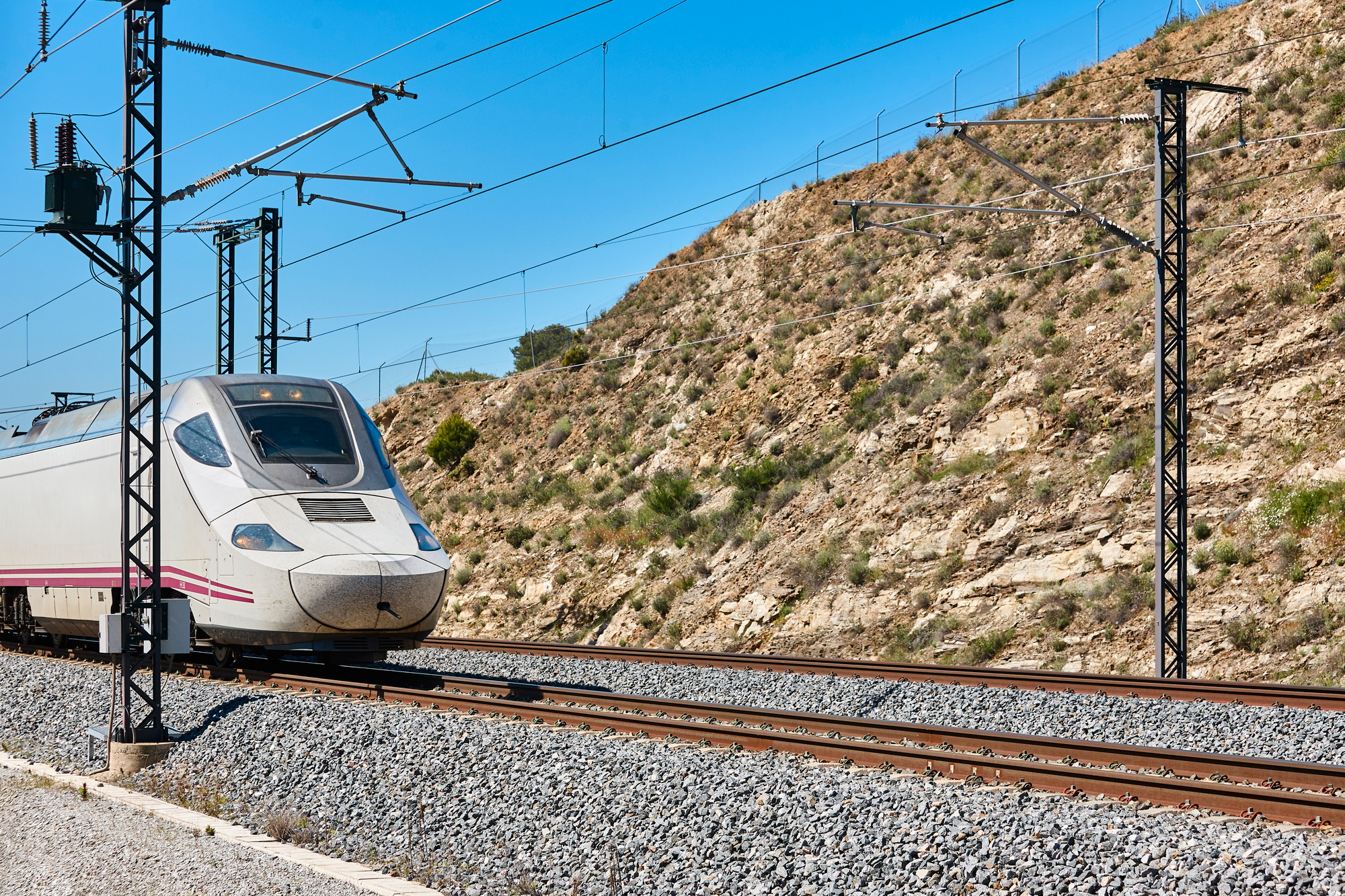Magazine
63% of young Spaniards under 30 consider that their car is essential in their everyday life

The Cetelem Observatory has published the Europe Automotive Study 2025, which analyses the relationship between young people and mobility and the automobile in 10 European countries (Germany, Belgium, Spain, France, Italy, Norway, the Netherlands, Poland, the United Kingdom and Portugal), as well as in China, the United States, Japan and Turkey.
Contrary to what one might initially think, young people are not disconnected from the car, but quite the opposite. As soon as they are legally allowed to do so, they are eager to get behind the wheel. Thus, a driving licence becomes an early necessity. In Spain, 38% of drivers obtained their driving licence at the age of 18, two points higher than the European average. Another 27% obtained it between the ages of 19 and 20, the same percentage as the European average; and 23% between the ages of 21 and 25, compared to 20% in Europe. Only 12% say they obtained their driving licence at the age of over 25.
Buying the first car
Half of young Europeans under 20 years of age living in cities with fewer than 20,000 inhabitants already own a vehicle.
However, financial constraints for young people when it comes to buying a vehicle remain strong. 6 out of 10 Europeans aged between 18 and 29 consider the price of a car to be too expensive. For this reason, 59% of Europeans under 30 buy their first used car, compared to 41% who buy a new one. In the case of Spain, it stands out above the European average in buying a new car as a first vehicle, with 56% of the mentions.
The average price in Europe for buying a first car is €13,985. Spain is above the average with an average cost of €15,625.
As for motorisation, petrol cars are the preferred choice for young Europeans, followed by electric and diesel cars.
The image of the car improves
According to the study, 7 out of 10 young Europeans say they enjoy driving. In addition, 1 in 2 people under 30 believe that their image of cars has improved over the last five years. Only 14% say it has deteriorated. It also highlights that this improvement in the image of cars is greater in cities than in rural areas, due to the growing importance of electric and hybrid cars in urban environments.
Young people are committed to mobility
For 6 out of 10 European drivers under 30, living their whole life without a car is unimaginable. French and Americans are the most reluctant to the idea of living without a car, while Turks, Poles and Chinese are more receptive.
However, the car is not everything, young people are considering different ways of getting around. Thus, we see that the use of the bicycle as a means of transport has gained ground for 7 out of 10 young people. The Netherlands and Poland are the countries that are most receptive to travelling by bicycle, while Portugal, the United States and the United Kingdom are the most reluctant.
Among the alternative means of transport used by young people, car sharing comes in second place, with 50% of young people stating that they use it.
Among young people who have at least one vehicle in their home, 57% say they also travel on foot on a daily basis, followed by 52% who use public transport.
In addition, 8 out of 10 young people also say that a car is essential for their daily life.
Safety, freedom and practicality are the three qualities of the car that young people most value.
Purchasing criteria
Rationality prevails when it comes to purchasing criteria. 45% of drivers under 30 consider price as the main factor when buying a car. However, this criterion is less important for them compared to older drivers, with a difference of almost 10 points. Both generations point to safety as the second most important purchasing criterion.
In addition, 9 out of 10 young drivers consider the information provided by brands important before making a decision.
The environmental image of the car
Almost half of young people consider cars to be the main cause of climate change. Cars are also cited as the main source of pollution in cities, especially among young people, with 64% of mentions.
It is also worth noting that 52% of drivers under 30 consider that the environmental measures imposed on cars and their use are sufficient, compared to 24% who consider them insufficient. 13%, on the other hand, believe that they are excessive.
The electric car, synonymous with progress
84% of young people say that technological advances will improve the environmental impact of cars. This is a point of view shared by all generations. In addition, 1 in 2 young people see electric cars as a more environmentally friendly means of transport, compared to 1 in 4 of those over 50 years of age.
In this sense, young people are enthusiastic about the future of the electric car, with 47% believing that it will be more relevant in the coming years. This contrasts with the opinion of those over 50, who are more cautious about this, with only 30% believing that it will be more relevant. 60% of young people also believe that the electric car will replace combustion cars in the future.
Methodology
The economic and marketing analyses as well as forecasts were carried out in collaboration with the research and consulting company C-Ways.
Fieldwork for the quantitative consumer surveys was conducted by Harris Interactive from June 25 to July 9, 2024 in 14 countries: Belgium, China, Germany, France, Italy, Japan, the Netherlands, Norway, Poland, Portugal, Spain, Turkey, the United Kingdom, and the United States.
A total of 16,000 online surveys (CAWI method, 3,000 in France and 1,000 in each of the other countries) were conducted with the general population aged between 18 and 65, with nationally representative samples in each country. The representativeness of the sample is guaranteed by the quota method (sex, age).
Discover more from Costa Blanca Daily
Subscribe to get the latest posts sent to your email.
Costa Blanca
Torrevieja to host “The Phantom of the Opera”

The iconic musical The Phantom of the Opera, a masterpiece by Andrew Lloyd Webber, is preparing to depart Madrid and travel to various regions of Spain. The celebrated show is preparing to embark on its first national tour in Spanish, which will span over 20 locations in Spain, following a successful residency at the Albéniz Theatre in the capital, which attracted over 300,000 spectators. The journey will commence in Torrevieja and will continue until early 2027.
The introduction of this eagerly anticipated tour will take place at the Torrevieja Municipal Theatre, in Plaza Miguel Hernández. Torrevieja audiences will have the opportunity to witness six performances from June 6th to 9th, 2025, during which the theatre’s galleries will be filled with music, mystery, and magic. The inaugural performance is scheduled for Thursday, June 6th, at 8:00 p.m. Subsequently, there will be two additional performances on Friday, June 7th, at 5:30 p.m. and 9:30 p.m., two more on Saturday, June 8th, at 5:00 p.m. and 9:00 p.m., and a final farewell performance at 6:00 p.m. on Sunday, June 9th.
This rendition of the theatrical classic, which is set in the grand Paris Opera, is faithful to Webber’s adaptation of Gaston Leroux’s novel and features Manu Pilas as the enigmatic Phantom and Judith Tobella as the scintillating Christine. Viewers are transported through the eerie corridors and backstage of this iconic theatre, where an enigmatic figure skulks, causing anarchy and dread.
Discover more from Costa Blanca Daily
Subscribe to get the latest posts sent to your email.
Costa Blanca
What is the reason for the disappearance of Chinese bazaars in Spain?

Approximately 25 years ago, Chinese bazaars appeared in every neighbourhood and industrial estate in Spain, displacing the traditional pound stores. Similarly, they are now disappearing. In various regions of Spain, numerous stores owned by individuals of Chinese descent are liquidating their inventory, with some giving away their stock. The closure of the enigmatic kings of the retail sector has spawned a plethora of theories and speculation on social media, as individuals seek to understand the underlying reasons.
The Balearic Wholesale Bazaar was overrun by residents, resulting in the deployment of police to the Son Castelló industrial estate in Palma last weekend to resolve the resulting pandemonium. The business announced that it would begin giving away all of its products after weeks of liquidation as a result of its closure. It is not the sole establishment that is closing in Spain or the Balearic Islands.
A few months ago, the Maxi Asia Chinese market in Málaga, which was one of the largest in the city, closed. A low-priced giant sold out its stock in Leganés just a few weeks ago, and the same incident happened. Or in Murcia, where a series of stores in the city centre have been closing since last year.
What is the reason for the closure of Chinese bazaars?
In light of the international political situation and the rearmament mandated by the EU, one of the most prevalent theories on social media speculates on a potential widespread exodus of the Chinese community from Europe. Consequently, there is a widespread rumour that China is in possession of the keys to a global economic catastrophe or an imminent war. This assertion is refuted by Fang Ji, the administrator of the Association of Chinese in the Balearic Islands.
“Indeed, we have observed that certain bazaars and shops in Mallorca that are operated by Chinese entrepreneurs have either closed or are in the process of liquidating their inventory in recent months.” He also notes that “in general, we can emphasise a number of factors: inflation, increasing rental and utility costs, and changes in consumer habits have impacted numerous small businesses, not just those in the Chinese community.”
Fang Ji posits that the viability of certain conventional businesses has been impacted by the rise of e-commerce and competition from large retailers. Ultimately, an Asian bazaar is unable to compete with platforms such as Shein, Temu, or AliExpress.
Occasionally, the causes of business closures are more closely tied to Pedro Sánchez’s policies than to the international situation: “Some business owners have indicated that the tightening of specific administrative and tax regulations has presented an additional obstacle to the continuity of their operations.” Investments and modifications that are not always practicable for all individuals are necessary to accommodate these modifications.
Fang Ji also emphasises that “the Chinese community in the Balearic Islands has contributed to the region’s commercial and business fabric for decades.” He also notes that some owners have decided to close for personal reasons or to reorient their business model, as the pandemic and economic changes have prompted many entrepreneurs to rethink their future and explore other opportunities.
What is the total number of Chinese bazaars in Spain?
The lack of specific official data complicates the process of determining the precise number of Chinese-run bazaars in Spain. In 2023, the figure was predicted to be 18,000 establishments, according to Laureano Turienzo, the president of the Spanish Retail Association. Nevertheless, Turienzo has estimated that the number of stores and bazaars in Spain could now surpass 20,000 in “very easy” fashion, as evidenced by numerous interviews with members of the Chinese community.
Discover more from Costa Blanca Daily
Subscribe to get the latest posts sent to your email.
Magazine
Train Links on the Costa Blanca

The Costa Blanca, while primarily known for its coastal charm, is also served by a network of train lines that facilitate travel within the region and beyond. While not as extensive as in some other parts of Spain, the train links offer a convenient and scenic way to explore the area.
The TRAM d’Alacant:
- This is the most significant rail network on the Costa Blanca, operating a modern light rail system that connects Alicante with various towns along the coast.
- The TRAM’s Line 1 is particularly popular, running from Alicante to Benidorm and onward to Denia, offering stunning coastal views along the way.
- It provides easy access to popular destinations like Altea, Villajoyosa, and El Campello, making it ideal for day trips and exploring the region’s diverse towns.
- The TRAM is known for its punctuality and efficiency, making it a reliable mode of transport.
- The TRAM is a very modern service, with comfortable trains.
Renfe Services:
- Renfe, Spain’s national railway operator, also provides train services to Alicante, connecting it with major cities like Madrid, Barcelona, and Valencia.
- The high-speed AVE trains offer fast and comfortable travel from Madrid to Alicante, making it a convenient option for those arriving from the capital.
- Renfe’s regional trains also connect Alicante with other inland towns and cities, providing access to a wider area.
- The Alicante train station is very well connected to the rest of the country.
Accessibility and Convenience:
- Both the TRAM and Renfe services are designed with accessibility in mind, catering to passengers with disabilities.
- Train stations are typically located in central areas, making them easily accessible by public transport or on foot.
- Ticketing is generally straightforward, with options for online purchase, ticket machines, and ticket offices.
- The train services offer a very good alternative to driving, especially in the busy summer months.
Benefits of Train Travel:
- Train travel offers a relaxed and scenic way to explore the Costa Blanca, allowing passengers to enjoy the views without the stress of driving.
- It’s also a more environmentally friendly option compared to driving, contributing to a reduction in carbon emissions.
- The TRAM, in particular, is a cost-effective way to travel between coastal towns, avoiding the need for parking and traffic congestion.
- The train services allow people to explore the Costa Blanca without the need to rent a car.
While the Costa Blanca’s train network may not cover every corner of the region, it provides essential links for both residents and tourists. The TRAM d’Alacant and Renfe services offer a convenient, comfortable, and scenic way to explore the region’s diverse attractions, making them a valuable asset to the Costa Blanca’s transport infrastructure.
Discover more from Costa Blanca Daily
Subscribe to get the latest posts sent to your email.
-

 Costa Blanca1 week ago
Costa Blanca1 week agoBefore Easter, the new road through La Hoya should open
-

 Costa Blanca2 weeks ago
Costa Blanca2 weeks agoElche is completing the new pavilion in the vicinity of L’Aljub
-

 Costa Blanca2 weeks ago
Costa Blanca2 weeks agoHospitality and recreation establishments in Elche receive 36 infringement reports from local police
-

 Costa Blanca2 weeks ago
Costa Blanca2 weeks agoNew Hotspot for Motorhomes in Elche
-

 Costa Blanca2 weeks ago
Costa Blanca2 weeks agoAlicante health centres are restricting phone appointments
-

 Costa Blanca2 weeks ago
Costa Blanca2 weeks agoElche’s PP and Vox approve a 9% water bill rise
-

 Costa Blanca2 weeks ago
Costa Blanca2 weeks agoMan dies after an accident between a car and a motorcycle near Torremendo
-

 Costa Blanca2 weeks ago
Costa Blanca2 weeks agoEleven years sought for woman counterfeiting 500€ notes












